Inside Booking.com’s Peer-Driven L&D Culture with Denisse Groenendaal-Lopez
TL;DR
Peer-Driven L&D is more than a trend—it’s how leading companies like Booking.com build resilience, innovation, and collective intelligence. Denisse Groenendaal-Lopez, Global Learning & Development leader for engineering, data, AI, and ML at Booking.com, shares how her team built a culture where experts drive learning, knowledge is shared openly, and AI plays a growing role in scaling development.
What We Mean by Peer-Driven L&D
Traditional learning models assume that knowledge flows from the top down. But in high-growth, knowledge-intensive companies, that model slows things down. Peer-Driven L&D flips the script.
Instead of HR or L&D “owning” all learning, the role shifts to:
-
Empowering experts to teach what they know.
-
Creating space for learning moments in the flow of work.
-
Connecting decentralized programs into a coherent ecosystem.
This isn’t just about efficiency—it’s about survival in fast-changing industries. When employees share knowledge freely, organizations adapt faster than competitors.
From Philips Lighting to Peer-Driven Learning
Denisse’s path into L&D began at Philips Lighting, during a critical inflection point. The company was shifting from selling light bulbs to building digital solutions like Philips Hue. That wasn’t a small pivot—it was a complete reinvention of its business model.
And L&D was at the center.
“We weren’t just teaching skills—we were enabling a shift in business models.”
Denisse and her colleagues built Philips Lighting University, a hub for upskilling employees on technology, sales, and digital services. It was one of her first lessons in how L&D can be strategic, not just supportive.
That experience set the stage for her work at Booking.com, where peer-driven approaches became the defining principle.
Booking.com’s Unique Learning Ecosystem
At Booking.com, Denisse found a culture that already leaned toward peer-driven learning. Employees were experimenting, failing fast, and sharing what they knew without waiting for formal approval.
The company structured its L&D function around three key elements:
-
Centralized strategy programs
-
Leadership development, onboarding, and large-scale initiatives.
-
Designed to align with organizational values and long-term goals.
-
-
Embedded business partners
-
L&D professionals dedicated to specific units like engineering or product.
-
They act as translators, connecting business needs with learning resources.
-
-
Craft-based knowledge sharing
-
Communities of practice (e.g., engineering, UX, data science) that set standards, define skills, and facilitate peer learning.
-
A way to operationalize tribal knowledge and make it scalable.
-
This model ensures that Peer-Driven L&D isn’t random—it’s structured.
How Peer-to-Peer Learning Actually Works at Booking.com
One of the strongest examples of peer-driven L&D in action is the Engineering Manager Program.
Instead of importing a one-size-fits-all leadership course, Booking.com engineers co-created their own internal conference.
Why it worked:
-
Engineers trust engineers – Content came from colleagues facing the same technical and managerial challenges.
-
Iterative design – The program improved like a product release: pilot, feedback, refine, repeat.
-
Relevance – Training focused on collaboration with product teams and navigating tech-specific leadership issues.
“Learning was happening everywhere. Our role wasn’t to control it—it was to amplify it.”
This program is now a blueprint for other functions at Booking.com—and a case study for how peer-driven L&D creates scalable, high-impact programs without overloading central L&D teams.
Why Peer-Driven L&D Outperforms Traditional Training
Many organizations still rely heavily on centralized, top-down training. That model struggles in fast-moving technical environments. Peer-driven L&D works better because:
-
It’s contextual – Employees learn from people who do the same work, not from abstract case studies.
-
It’s scalable – Every subject-matter expert can become a teacher, multiplying L&D’s reach.
-
It builds culture – Knowledge-sharing becomes part of daily work, not an add-on.
-
It increases retention – Employees feel valued when they contribute as experts, not just consumers of training.
This shift mirrors broader movements in learning: from learning management systems (LMS) to knowledge ops platforms, from static courses to dynamic expertise-sharing.
AI’s Role in the Future of Peer-Driven L&D
Denisse is now focused on the intersection of AI and learning. At Booking.com, this plays out in two ways:
-
Everyday AI tools for learning teams
-
Curating and recommending content.
-
Automating processes like coaching follow-ups and catalog navigation.
-
-
Advanced AI for specialized teams
-
ML scientists and engineers use in-house AI models to push product innovation.
-
L&D ensures they also share back learnings through peer-driven forums.
-
The key is integrating AI into the flow of work. Instead of forcing people to leave their tools to find training, AI connects curated knowledge with real-time needs.
But Denisse emphasizes that AI isn’t a replacement for people.
“AI can surface knowledge, but peer-driven sharing makes it meaningful.”
Lessons for L&D Leaders Building Peer-Driven Models
From her journey, Denisse offers several lessons for anyone shaping the future of learning:
-
Anchor learning to strategy – L&D must drive transformation, not just compliance.
-
Empower SMEs as teachers – Provide tools and support, but let experts lead.
-
Design hybrid models – Balance centralized initiatives with grassroots peer-driven learning.
-
Experiment with AI – Use it to simplify discovery and logistics, but keep humans at the core.
-
Listen everywhere – Peer-driven L&D means valuing small, niche communities as much as enterprise-wide rollouts.
Why Peer-Driven L&D Matters Now
As organizations scale globally and move faster than ever, knowledge can no longer live in silos. Peer-Driven L&D is the operating model for learning at speed.
Booking.com’s culture shows that when companies give employees the space, tools, and encouragement to share, they unlock a compounding advantage of collective intelligence.
For Denisse, the philosophy is simple:
“When people share knowledge, it’s a win-win. You don’t lose anything—you multiply value.”
Conclusion: Building Cultures of Shared Learning
Peer-Driven L&D is not a “nice to have”—it’s how companies adapt, innovate, and thrive. Booking.com’s model shows that the best learning cultures aren’t dictated from HR—they’re co-created by employees, amplified by technology, and aligned with business strategy.
For L&D leaders, the takeaway is clear: Stop being the sole provider of learning. Start being the enabler of peer-driven knowledge.

